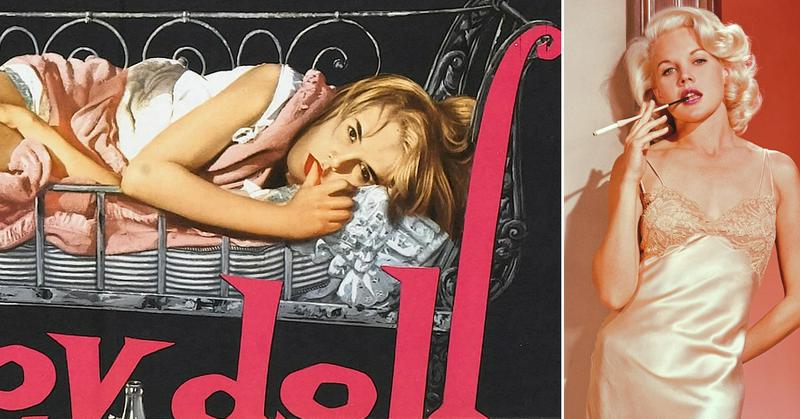Carroll Baker, 'Baby Doll's Scandalous Star: Her Rise And Fall
By | July 23, 2019

Even today, the image of Carroll Baker sucking her thumb on the poster for Baby Doll (1956) seems a little wrong. The controversy hurt the film's box office, but brought Baker, who appeared in Giant in the same year, into the limelight. She won the Golden Globe as "New Star of the Year" in 1957, and for a decade was a sex symbol who shared top billing with some of the biggest male stars. Baker's Hollywood run came to a sudden end in the late '60s, and she took her talent to Europe for a time. She returned to the U.S. and resumed her acting career in the '80s, and today is underappreciated icon.

Carroll Baker was born to a traveling salesman in Johnstown, Pennsylvania, and when her parents divorced, she moved to Turtle Creek, Pennsylvania with her mother and younger sister. She spent a year at St. Petersburg Junior College before becoming a magician’s assistant in vaudeville and a professional dancer. She then moved to New York, where she rented an apartment in Queens, making ends meet as a nightclub dancer and chorus girl.
A Young Marriage And An Early Success

While working as a chorus girl, she was introduced to Louie Ritter by the headliner of the show, who asked if Baker could stay at the Weylin Hotel, which Ritter owned, for free. Ritter gave her jewels and furs and eventually married her. He was 54 (she was only 21) and had been married five times before. In her biography, she reveals that Ritter took her virginity when he raped her. After about a year, they divorced.
Baker's career had begun to heat up, with roles in commercials and a small walk-on part in Easy to Love in 1953.

After the divorce, Baker studied under Lee Strasburg at the Actor’s Studio and became friends with James Dean, who recommended her for the lead role in Rebel Without a Cause, She turned down the part (which went instead to Natalie Wood), a decision she came to regret. She also met Jack Garfein, whom she would later marry. She landed roles on Broadway and in commercials and they eventually led to her first supporting role, as Luz Benedict in Giant, which starred Elizabeth Taylor, Rock Hudson, and James Dean in 1956. At the same time, she was cast in the role of the title character in Tennessee Williams’ Baby Doll. For this role, she was nominated for the Academy Award for Best Actress. She began to have troubles with her studio, Warner Bros. when she refused several roles, including the role of a nymphomaniac in 1958’s Too Much, Too Soon.
Baker Becomes A Western Star

In 1957, she began filming The Big Country, opposite Gregory Peck and Charlton Heston. She was also in the 1962 western How The West Was Won, part of an all-star cast that included Karl Malden, Gregory Peck, John Wayne, Jimmy Stewart, Richard Widmark, and Debbie Reynolds.
In 1965, Baker starred in Harlow as the screen siren Jean Harlow. The film was a flop, and Baker had trouble getting work in Hollywood afterward.
Baker Begins Acting In Italy

By 1966, she had been fired from Paramount, her second marriage had unraveled, and she had had two nervous breakdowns. She escaped to Italy where director Marco Ferreri hired her for Her Harem (1967). She became a favorite of the giallo (Italian horror) films of Umberto Lenzi, who cast her in Orgasmo and So Sweet, So Perverse, both in 1969. Many of Baker's roles during her European period shared a common element, nudity -- but she had been blackballed in Hollywood and needed to support her children, so she took the roles. She returned to the western genre, sort of, with Captain Apache, an “acid western” shot in Spain and directed by an Italian, Gianfranco Parolini, that was definitely not politically correct. By 1977, she returned to the U.S., where she was cast in Andy Warhol’s Bad. By 1982, she had married her third husband, British actor Donald Burton. They remained married until he died in 2007.
A Life After Italy

Since returning from Italy, she has had roles in a few films, including Kindergarten Cop, and has been a character actor for several television shows. In 1979, she published her autobiography, and has since released three other books, including her most recent, a novel published in 2019.
